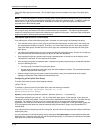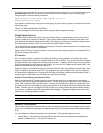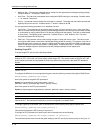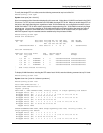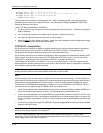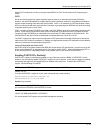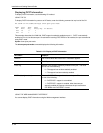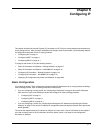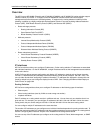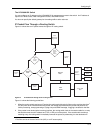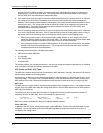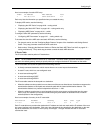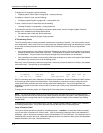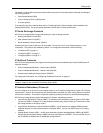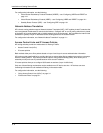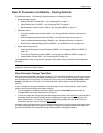
Installation and Getting Started Guide
Overview
The HP Procurve HP 6208M-SX switch and HP 9304M, HP 9308M, and HP 6308M-SX routing switches support
Internet Protocol (IP) version 4. IP support on the HP 6208M-SX consists of basic services to support
management access and access to a default gateway. IP support on the routing switches includes all of the
following, in addition to a highly configurable implementation of basic IP services including Address Resolution
Protocol (ARP), ICMP Router Discovery Protocol (IRDP), and Reverse ARP (RARP):
• Route exchange protocols
• Routing Information Protocol (RIP)
• Open Shortest Path First (OSPF)
• Border Gateway Protocol version 4 (BGP4)
• Multicast protocols
• Internet Group Membership Protocol (IGMP)
• Protocol Independent Multicast Dense (PIM-DM)
• Protocol Independent Multicast Sparse (PIM-SM)
• Distance Vector Multicast Routing Protocol (DVMRP)
• Router redundancy protocols
• Virtual Router Redundancy Protocol Extended (VRRPE)
• Virtual Router Redundancy Protocol (VRRP)
• Standby Router Protocol (SRP)
IP Interfaces
HP ProCurve devices allow you to configure IP addresses. On the routing switches, IP addresses are associated
with individual interfaces. On the HP 6208M-SX, a single IP address serves as the management access address
for the entire device.
All HP ProCurve devices support configuration and display of IP address in classical sub-net format (example:
192.168.1.1 255.255.255.0) and Classless Interdomain Routing (CIDR) format (example: 192.168.1.1/24). You
can use either format when configuring IP address information. IP addresses are displayed in classical sub-net
format by default but you can change the display format to CIDR. See “Changing the Network Mask Display to
Prefix Format” on page 6-80.
Routing Switches
HP ProCurve routing switches allow you to configure IP addresses on the following types of interfaces:
• Ethernet ports
• Virtual routing interfaces (used by VLANs to route among one another)
• Loopback interfaces
Each IP address on a routing switch must be in a different sub-net. You can have only one interface that is in a
given sub-net. For example, you can configure IP addresses 192.168.1.1/24 and 192.168.2.1/24 on the same
routing switch, but you cannot configure 192.168.1.1/24 and 192.168.1.2/24 on the same routing switch.
You can configure multiple IP addresses on the same interface.
The number of IP addresses you can configure on an individual interface depends on the routing switch model. To
display the maximum number of IP addresses and other system parameters you can configure on a routing switch,
see the “Configuring Basic Features” chapter of the Installation and Getting Started Guide.
You can use any of the IP addresses you configure on the routing switch for Telnet, Web management, or SNMP
access.
6 - 2



